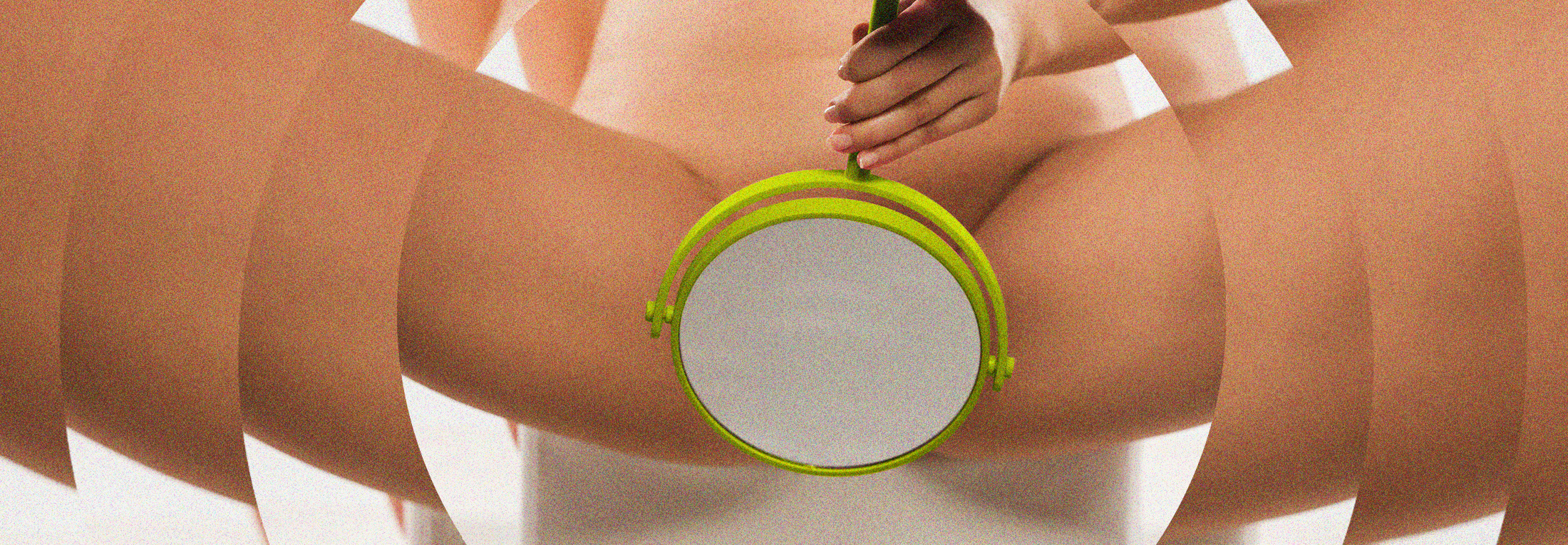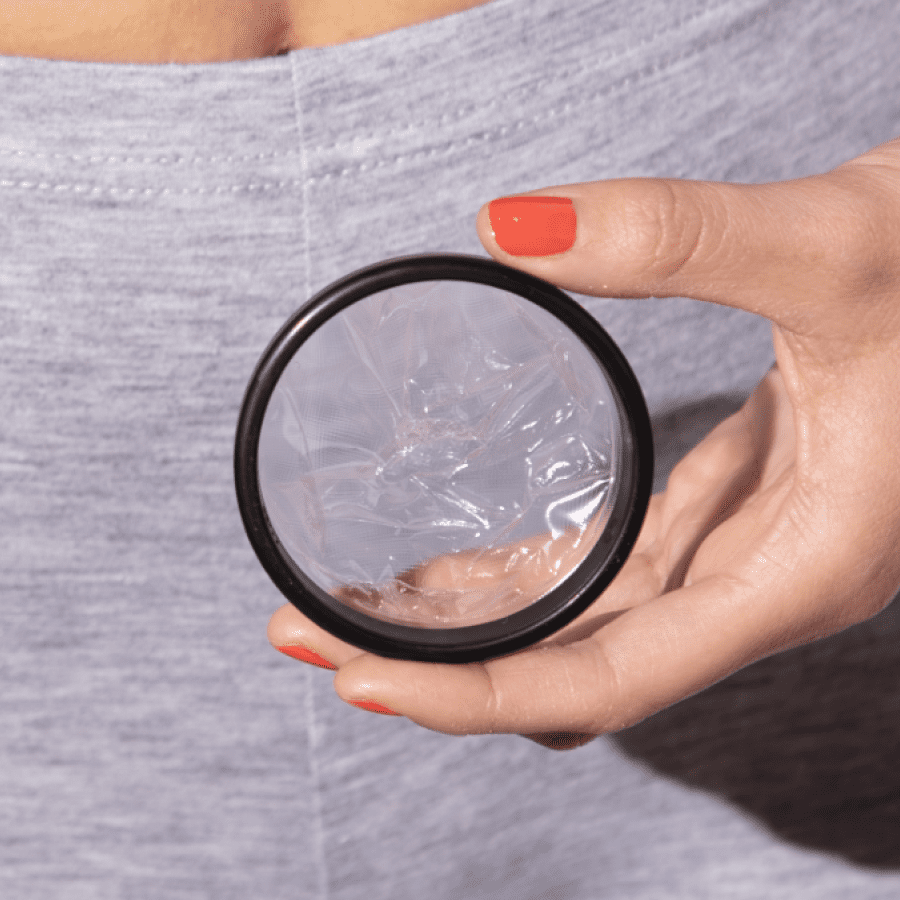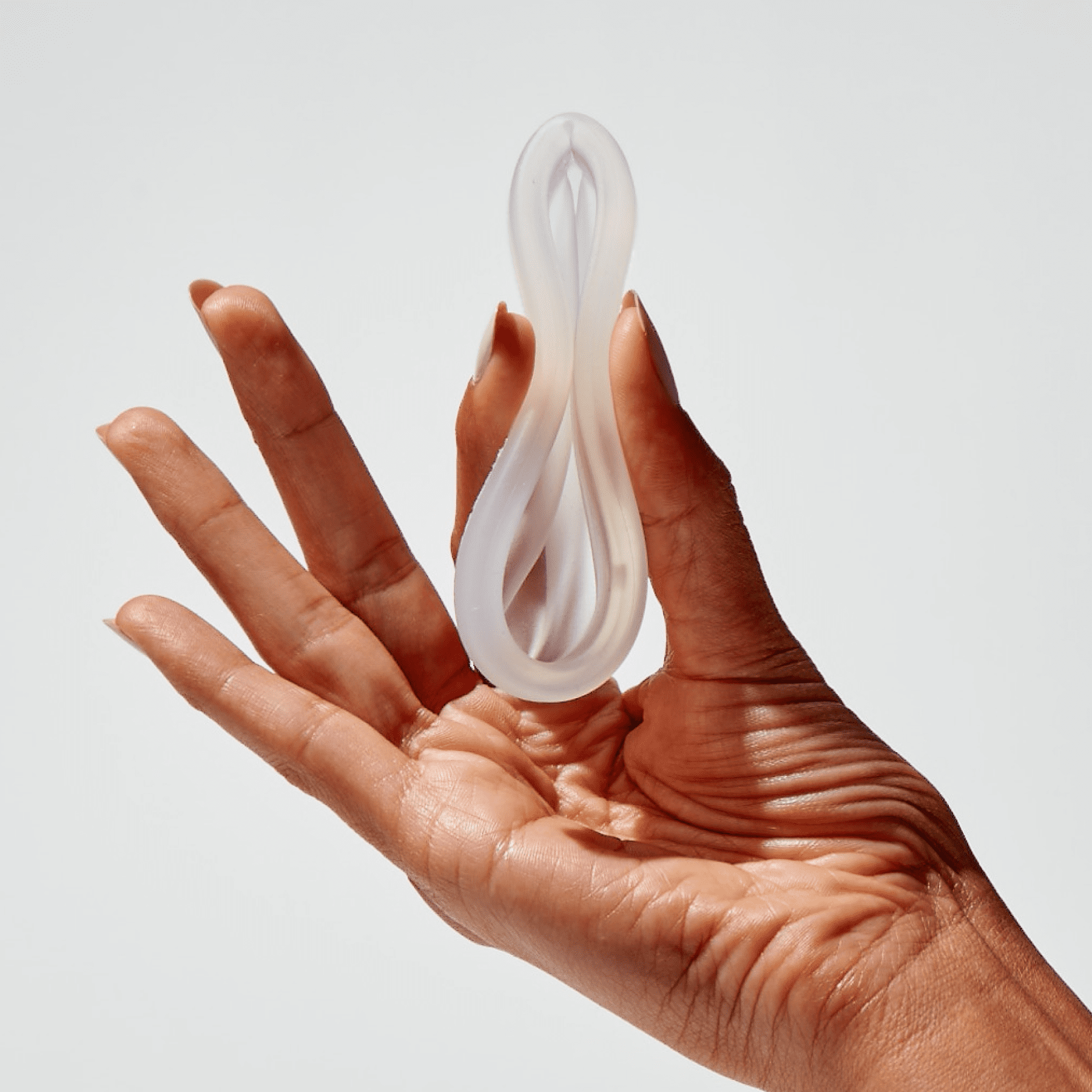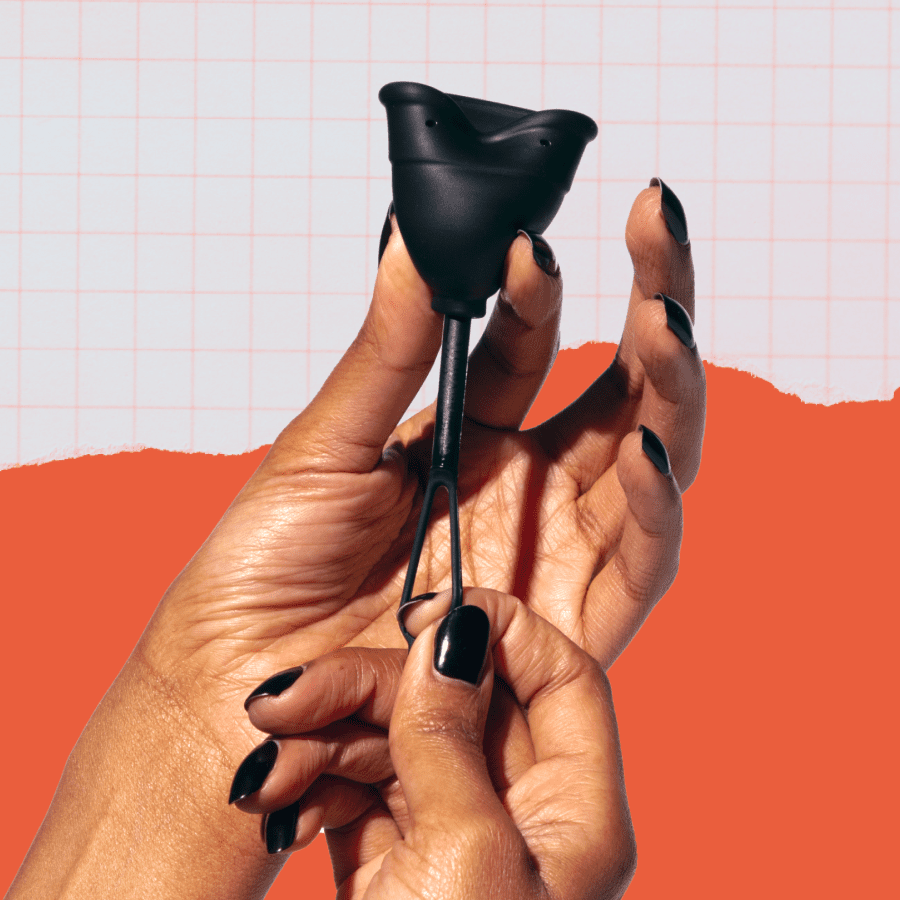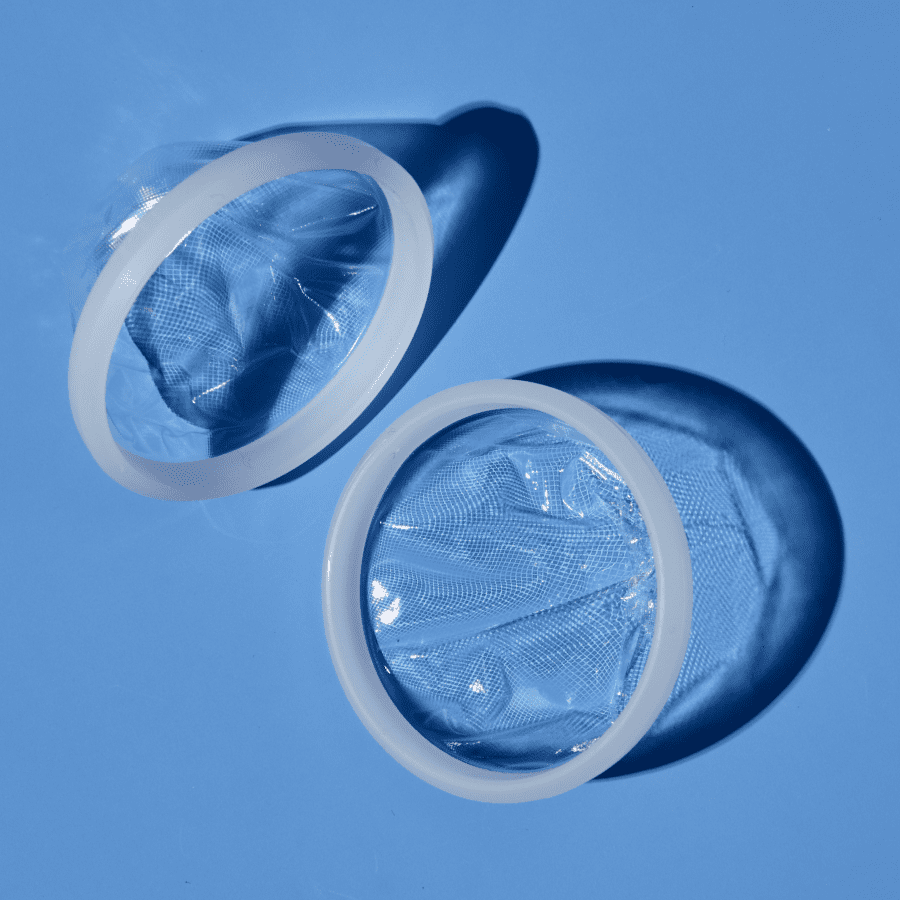Why your vulva might change colors (but seriously, don’t panic)
Picture this: You’re about to embark on a night of some much-needed “me time.” You prepare a candlelit bath, a crisp glass of vino, and Adele on shuffle. You undress and get ready to soak into serenity only to catch a glimpse of a pair of newly tinted labia staring back at you. You frantically question how exactly your “other lips” could also appear wine stained by one too many sips of Cab Sauvignon.
“Was my labia always this color?”
Change can sometimes cause a stir (remember the sheer panic when iPhone decided to ditch its precious Home button?). However, it’s actually unnatural for things not to change with time and age, especially in regard to our bodies.
So keep calm and carry on knowing that a different-colored vaginal area is no cause for a downward spiral (promise!). Continue reading to learn more about the natural causes and frequency of vaginal discoloration.
DISCLAIMER: When speaking in everyday terms, it’s extremely common to use the term “vagina,” implying the whole enchilada (AKA both the inner and outer workings). While it is a correct anatomical term, the vagina only consists of the inner canal.
The part of a person’s body being referred to when discussing visible changes from the outside is known as the vulva, which is made up of the inner labia (labia minora) and outer labia (labia majora), as well as the clitoris.

TLDR: Yes, vulvar discoloration happens (and it’s totally normal!)
Let’s go back to the iPhone Home button for a sec. With time, advancement, and even some external factors, the changes made to each new edition of the iPhone. These modifications likely weren’t just decided during last week’s staff meeting.
What we’re getting at is that months (if not years) went by during which any major changes were in the works.
The human body is similar in regard to changes of your skin. When you encounter small patches of skin that are darker than the rest, most of the time it’s due to something called hyperpigmentation. Not only could this skin condition appear on the hands, arms, or face (like sun spots or melasma), but it is an entirely natural occurrence post-puberty in genital areas, including the labia, scrotum, and anus.
Skin color changes are typically caused by one of these factors
1. Hormones
As the largest and most external organ of the human body, your skin is made up of a group of cells called melanocytes, which are responsible for melanin production (the same things that give our hair, eyes, and skin their color). The melanocytes are particularly sensitive to hormones, specifically in the genital areas.
If you’ve ever been pregnant, you most likely experienced a dark brown line that appeared in your abdomen later on in your pregnancy. We’re talking about the linea nigra, and its occurrence is very common in women as pregnancy progresses.
“I think it’s widely recognized that similar to the linea nigra, hormones can affect the skin color of our vulva,” explains Jane van Dis, MD, a board-certified OB-GYN, and Medical Advisor to Flex.

These hormonal changes notably occur during puberty, pregnancy, and menopause, due to an increase in melanocytes. They can also be present in other areas of the body, including the nipples, areolae, and moles.
2. Friction and inflammation
Just like chafing of the thighs (a bona fide pain in the a$$), friction in your pubic area can lead to an increase in melanocyte hyperactivity, which boosts melanin and leads to hyperpigmentation.
Friction and continuous rubbing around the labia and the skin folds surrounding the groin area can be caused by sexual activity, childbirth trauma, or rubbing on a daily basis.
The constant rubbing results in a process called keratinization, which develops cells containing melanin toward the outermost layer of the skin and results in skin color changes surrounding those areas. Other external factors can lead to keratinization, like shaving and using hair removal products.
Sometimes, friction can cause inflammation in the skin, which causes post-inflammatory hyperpigmentation. To put it simply, picture the days after taming the beast, which is a massive pimple. After letting it scab and heal, the area where the pimple was located still appears slightly darker in color. This typically does not cause scarring (unless you decide to go full Dr. Pimple Popper on it), and even with no treatment, will improve over time.
Yeast infections, ingrown hairs, and folliculitis can also cause post-inflammatory hyperpigmentation, but topical treatments approved by a doctor pose no threat to your overall health.
Some ways to limit friction and chafing are:
- Avoiding tight clothing (especially underwear)
- Moisturizing your skin frequently
- Limiting the amount of sweat-wicking clothing
- Refraining from excessive hair removal, like waxing or shaving if you commonly experience inflammation or folliculitis from doing so.
3. Aging + Vulvar Discoloration
Changes in pigmentations in the body naturally come with age, particularly in the genital areas.
Some of these changes could also be caused by different factors, including repeated sun exposure, shaving, and sometimes even genetics.
Sun exposure can also accentuate these skin color changes and will more notably appear in the form of freckles, moles, and liver spots, in which skin type also comes into play.
Why “treatment” for vulvar skin color changes is NOT recommended
Real talk: It is entirely normal to express concern over ANY bodily changes. However, vulvar skin darkening or discoloration is a natural bodily occurrence, especially as you get older. Cultural ideals and societal expectations around the appearance of vulvas can be influenced by several factors, including porn, social media, and cultural beauty standards.
So it’s important to check your assumptions about why someone would even want to change their vulva to those resembling adolescent labia in shape or color, including questioning whether their desire is rooted in societal or cultural pressures to conform to certain standards of beauty, which may be influenced by racist (whiteness) or sexist ideas about womanhood.

In addition, taking matters into your own hands by attempting to treat any “issue” could create another issue and is highly advised against due to safety concerns.
“You should never apply any bleaching lotions, creams, or topical ointments to your vulva, perineum, or anus in order to change the color of the skin,” says van Dis. “The agents used to bleach your skin can cause permanent damage, scarring, and skin damage.“
So, that one Reddit thread that swears by “lightening creams that actually work” is gonna get an immediate downvote from us (sorry, not sorry).
Keep in mind, these changes might look different on everyone
While most people will experience some form of hyperpigmentation with aging, it’s important to note that no two cases look exactly alike.
Although the genital area does tend to exhibit a darker coloration, your natural skin tone will also play a role in how pigmentation over time appears. Again, it is important to recognize that there is no “normal” or “correct” way for vulvas and labia to look.
But there are a few signs and symptoms to keep an eye out for…
In most cases, vulvar skin color changes are not a threat to your health. If any change in skin tone of the vulva is accompanied by side effects or complications, an infection may have resulted from the inflamed area. This is when it’s important to schedule an appointment with your healthcare provider.
“Infections usually present as redness and swelling and pain in the skin, so they definitely can alter the color of one’s skin,” van Dis explains. “You should always see a physician if you notice increased swelling, pain, itching or burning, redness, or darkened areas of your vulva.”
In some cases, hyperpigmentation may be mistaken for a mole or a freckle. These are both typically benign forms of hyperpigmentation. However, if you experience symptoms including a mole that is dark and enlarging this could be a sign of a common skin cancer called melanoma, so be sure to alert your gynecologist to a new darkly-colored lump or bump on the vulva or other intimate areas.
The bottom line is that any concerns should be brought to the attention of a dermatologist or your OB/GYN. They will be able to go over your medical history, risk factors, and give you an exam.
When should someone consult a healthcare provider about vulvar discoloration?
If vulvar skin discoloration is accompanied by itching, pain, unusual discharge, or changes in texture, it is advisable to consult a healthcare provider promptly. Any sudden or persistent changes in vulvar skin color warrant medical attention for proper evaluation and diagnosis.
Most importantly, celebrate your body for being so kicka$$!
Look, we get it – sometimes, new changes are met with new insecurities. With that said, it’s extremely important to keep in mind that while body image has falsely become the forefront of self-worth, beauty should never be measured by color, shade, or a marking set forth by society’s unrealistic standards.
When the focus shifts from what are believed to be “imperfections” to ALL the things your body is capable of, self-love can truly be achieved. Lastly, be kind to yourself as all of these unique features are what make us, well… us!
This article is informational only and is not offered as medical advice. It does not substitute a consultation with your physician. Please consult your physician if you have any gynecological/medical concerns or conditions.
© 2024 The Flex Company. All Rights Reserved.
